Do you want to enrich your Access database with real postal codes from Austria? No problem! In this guide, I will show you how to efficiently import Excel data into your Access database and correctly adjust the structure of the data. We will use an Excel file that contains all relevant postal codes and their corresponding locations.
Key Insights
- The import of Excel data into Access requires preparation of the target table.
- The structure of the Excel data must match the target table in Access to ensure a smooth import.
- It is important to make corrections to the relationships of the tables before importing.
Step-by-Step Guide
1. Make Preparations
Before you start the import, you should ensure that your Access database has the correct structure. Open your Access project and check if the table for postal codes and locations exists. If it only contains fictitious records, it’s time to add the real data.
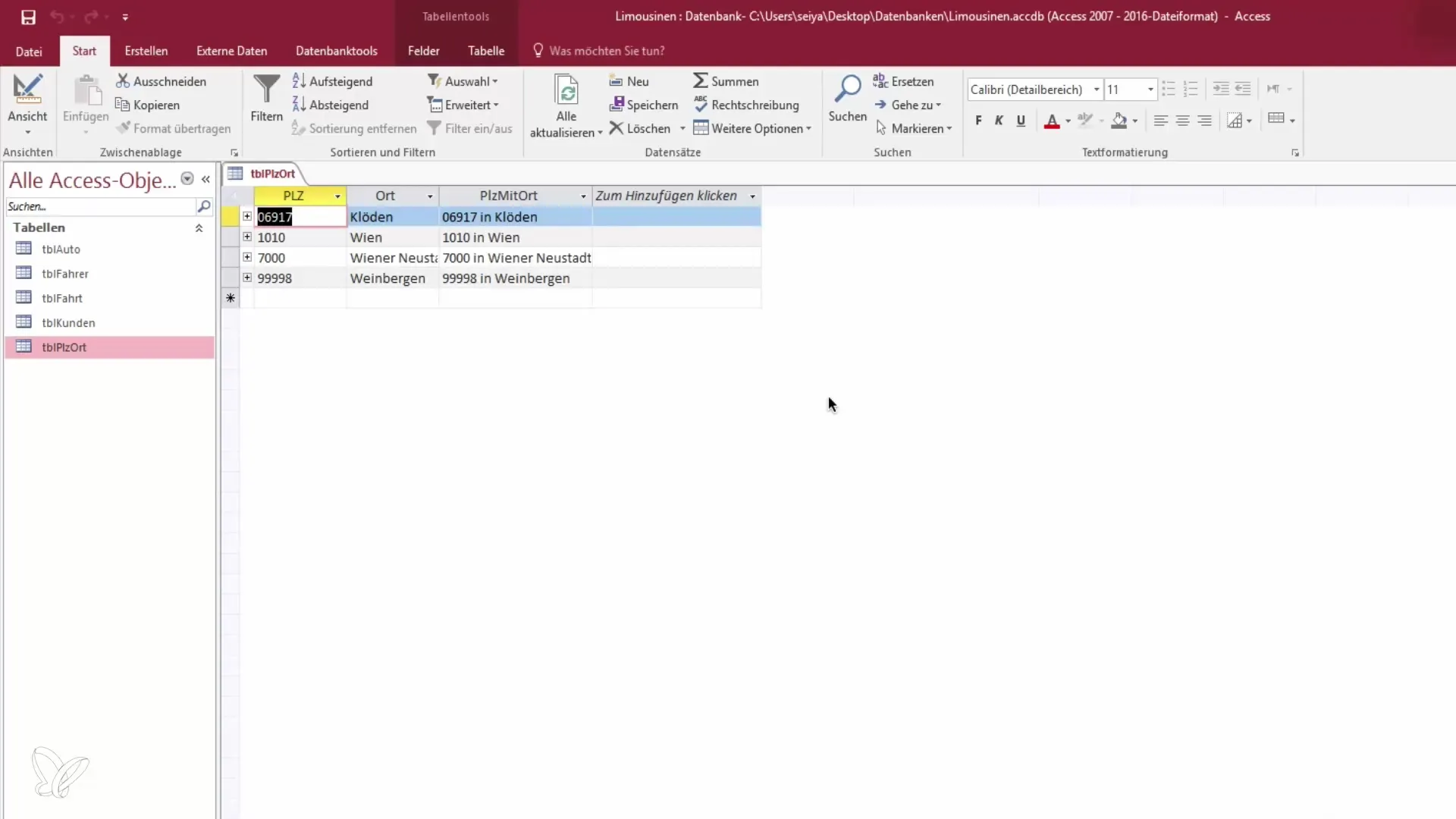
2. Check Relationships
If you want to delete records in Access, first check the existing relationships. You cannot delete records if they are related to other records. Go to the relationship tables and make sure to remove the references to the postal code before proceeding.
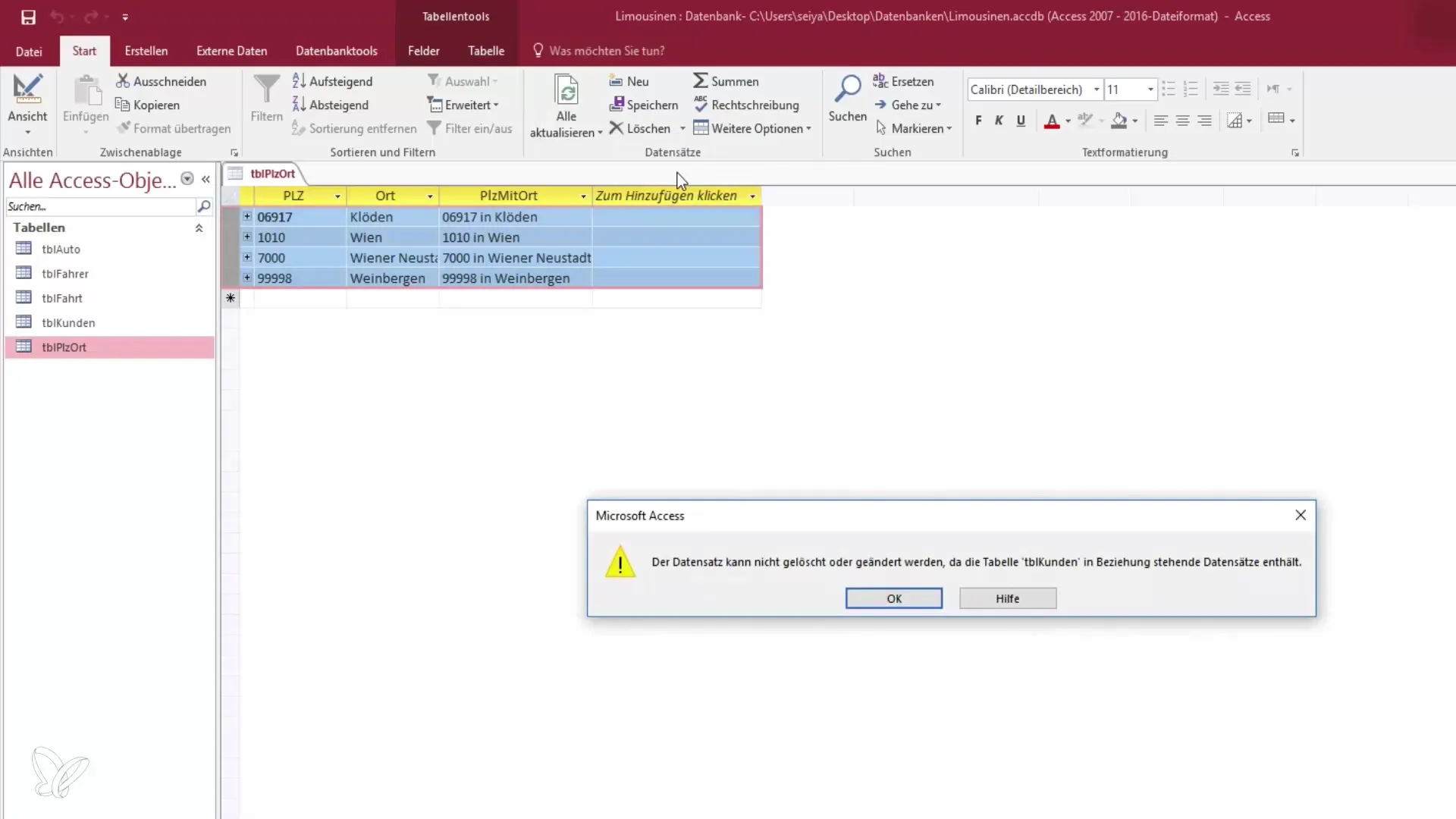
3. Delete Existing Data
If necessary, first delete all existing postal code records. Click on the corresponding records and select “Delete.” Note that you may need to first resolve the relationships with customers and other linked tables.
4. Check Excel Data
Open your Excel files that contain the postal codes. You should ensure that the data is well structured: the first column should contain the postal code and the second column should contain the corresponding location. Make sure that the column headers match the field names in your Access table.
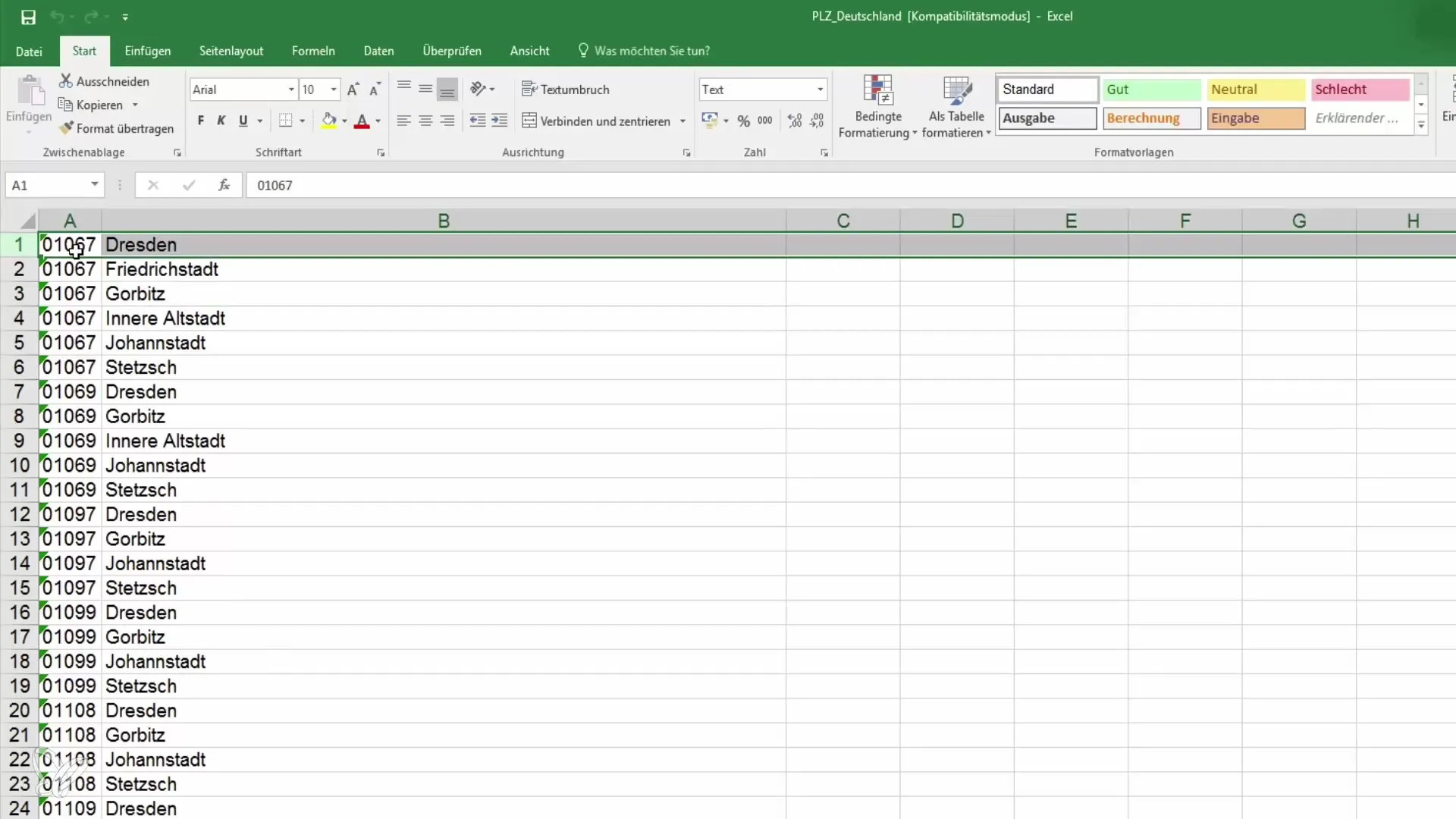
5. Start Import Function
Now, start the import process. Go to the “External Data” menu and select “Excel.” Locate the file on your computer that contains the postal codes. Ensure that the path is correct.

6. Set Import Options
In the import wizard, you need to select whether you want to append the data to an existing table. Since you already have a table named “Postal Codes and Locations,” select this one.
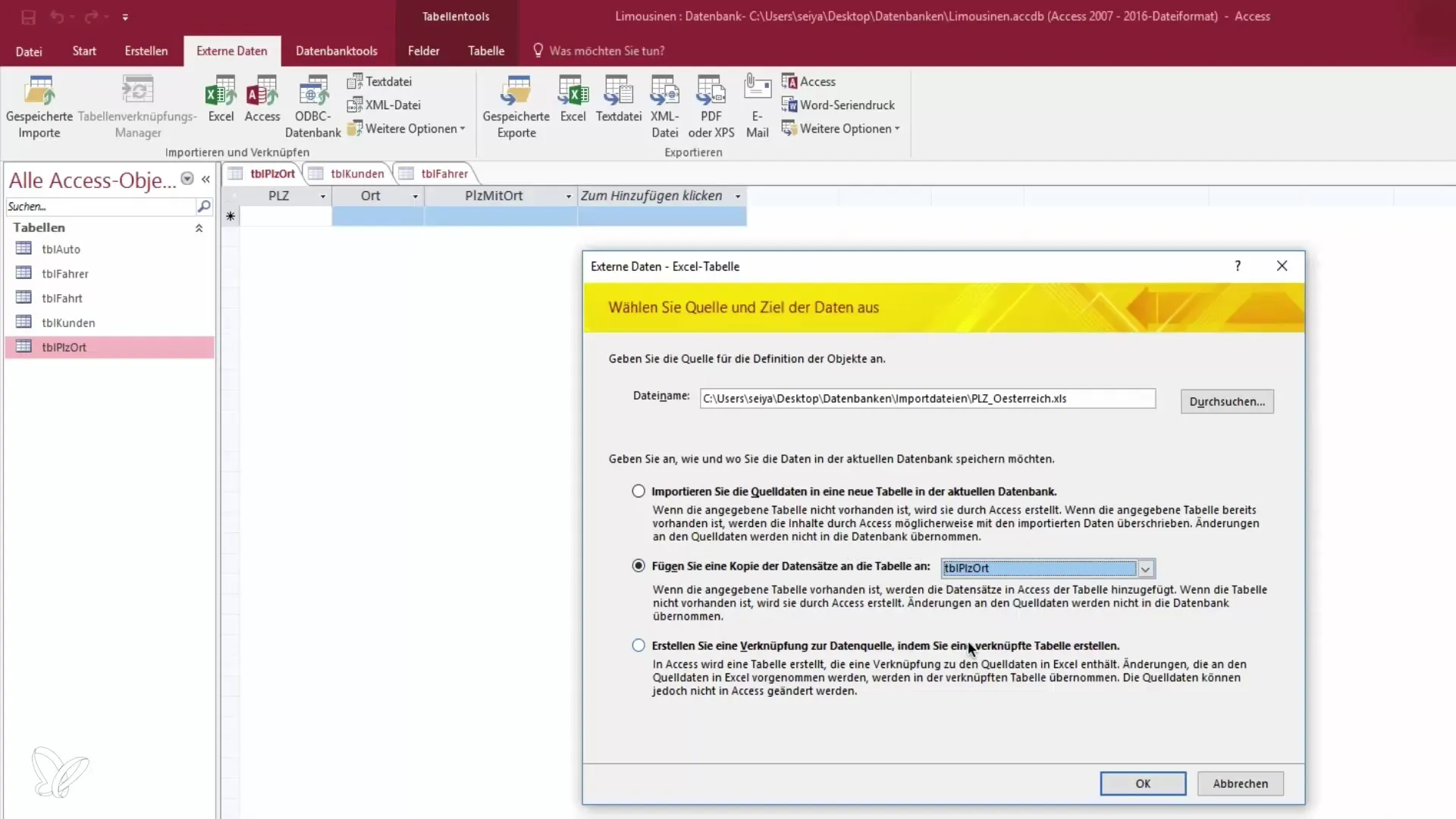
7. Import the Data
Now you can review the import data. Make sure that the first row of the Excel file contains the column headers and that these match the structure of the Access table. Click “Next” and check the field mapping.
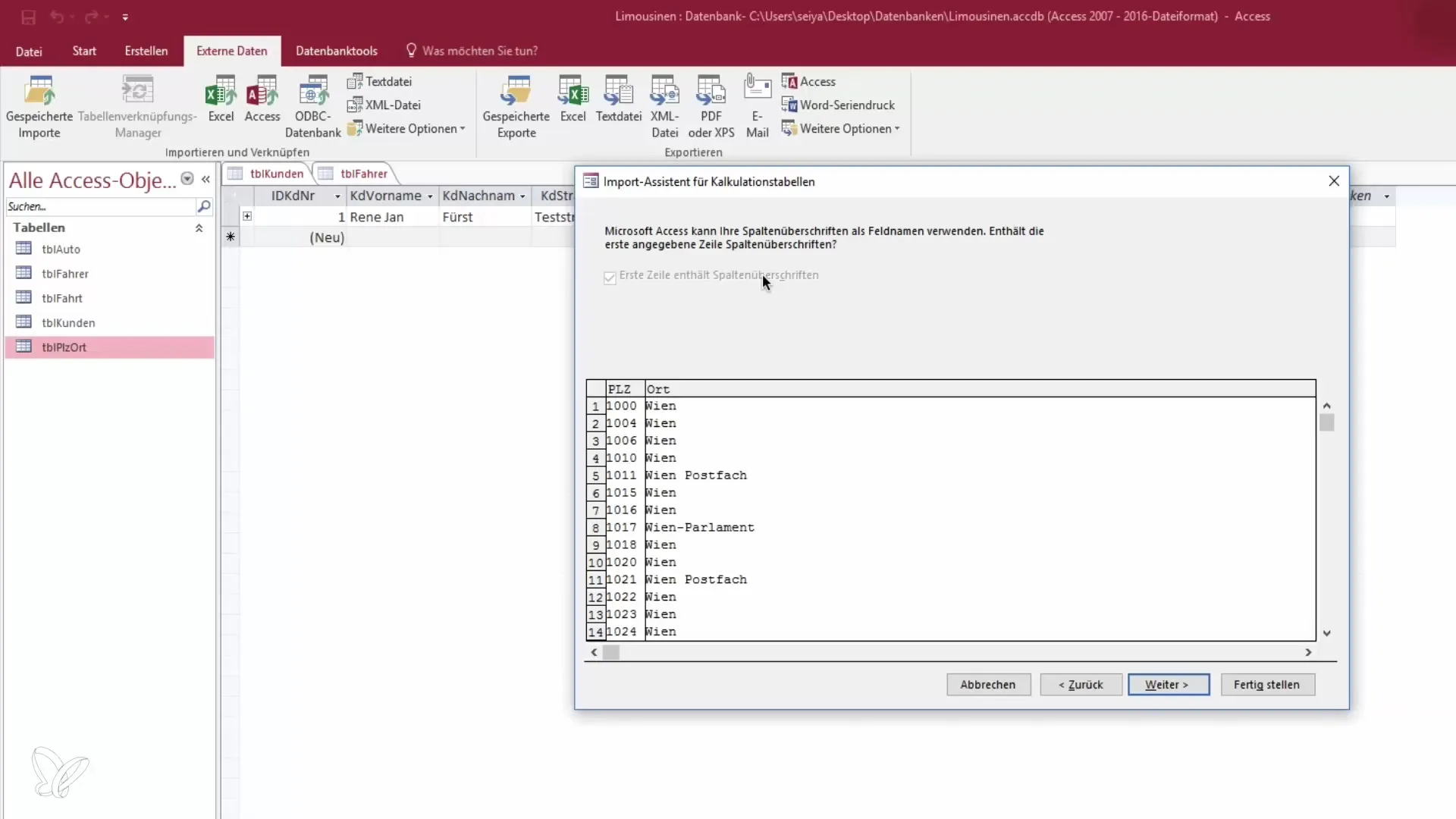
8. Finish the Import
After reviewing, click “Finish.” An import will now be performed, and you should be able to see the new records in your Access table. Check if all postal codes and their corresponding locations are correctly entered.
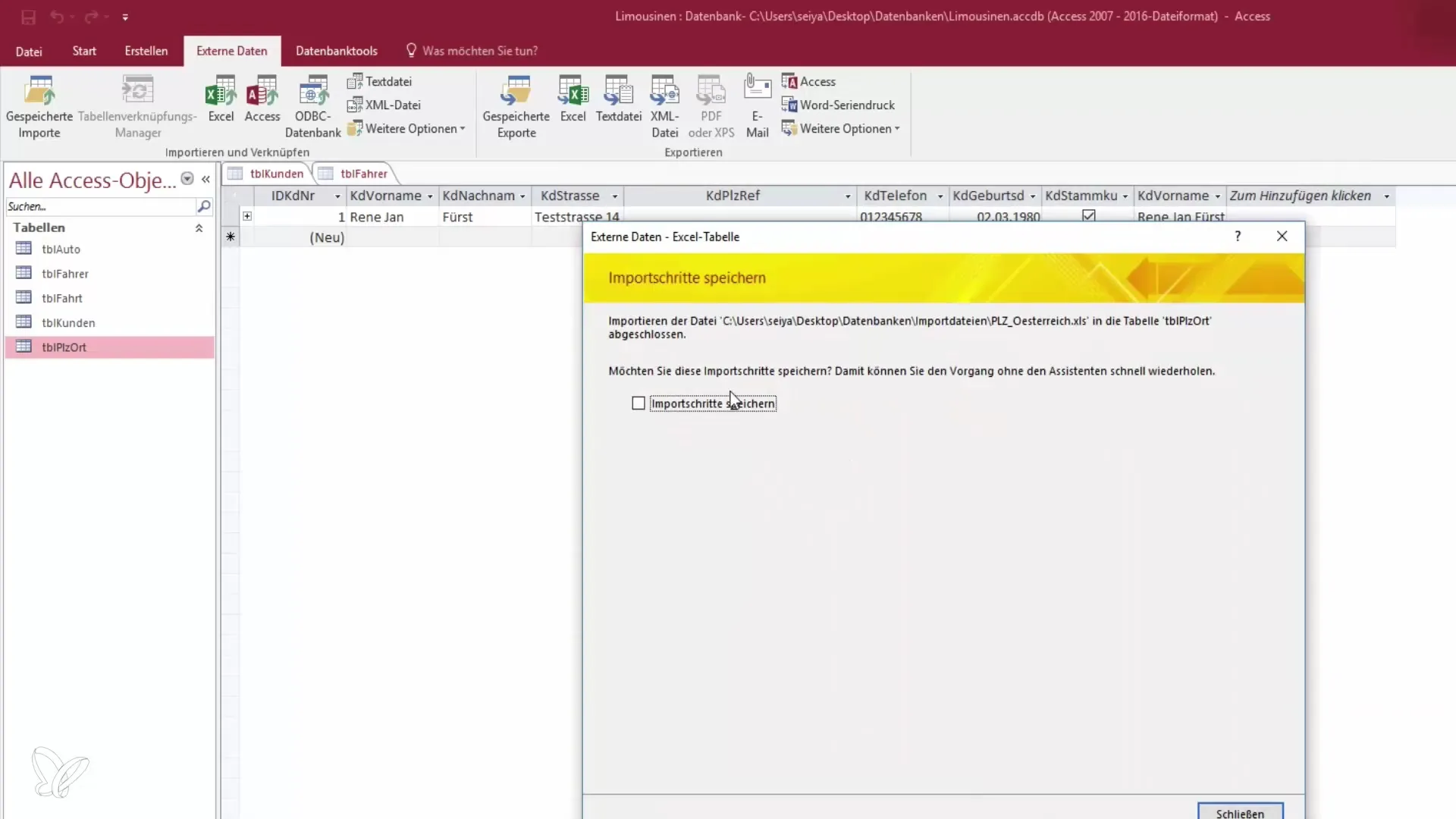
9. Check Imported Data
Look at the table after the import. You should now have all postal codes in the database. A calculated field should also correctly display whether the postal code and the corresponding location match.

10. Next Steps
In the next lesson, we will look at how highly complex requirements can be posed, such as importing data from Germany. You will also encounter various problems that we will solve together.
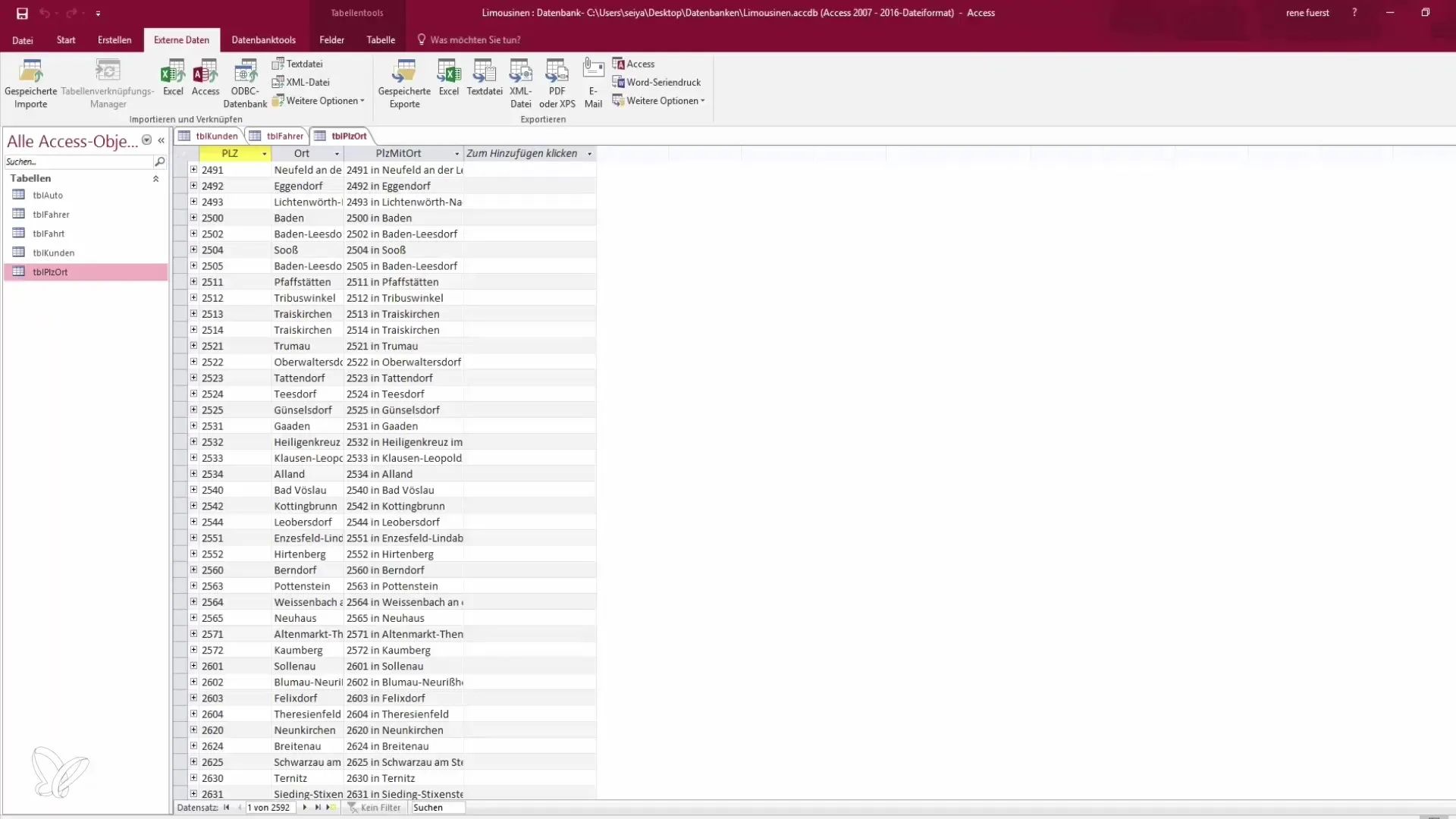
Summary - Guide to Importing Postal Codes from Austria into Access
The importing of real-time data from Excel into Access is a crucial step in improving your database. With the right structure and approach, you can import the postal codes efficiently and error-free.
Frequently Asked Questions
How can I prevent data from being overwritten during import?Ensure that you select the correct target table and do not overwrite the existing one. Use the option to append the data to the existing table.
Can I repeat the import process?Yes, the import process can be repeated multiple times as long as you ensure that no conflicts arise with existing records.
How do I check if the imported data is correct?Compare the data in Access with the source data in the Excel file. Make sure that all columns are correctly mapped.


